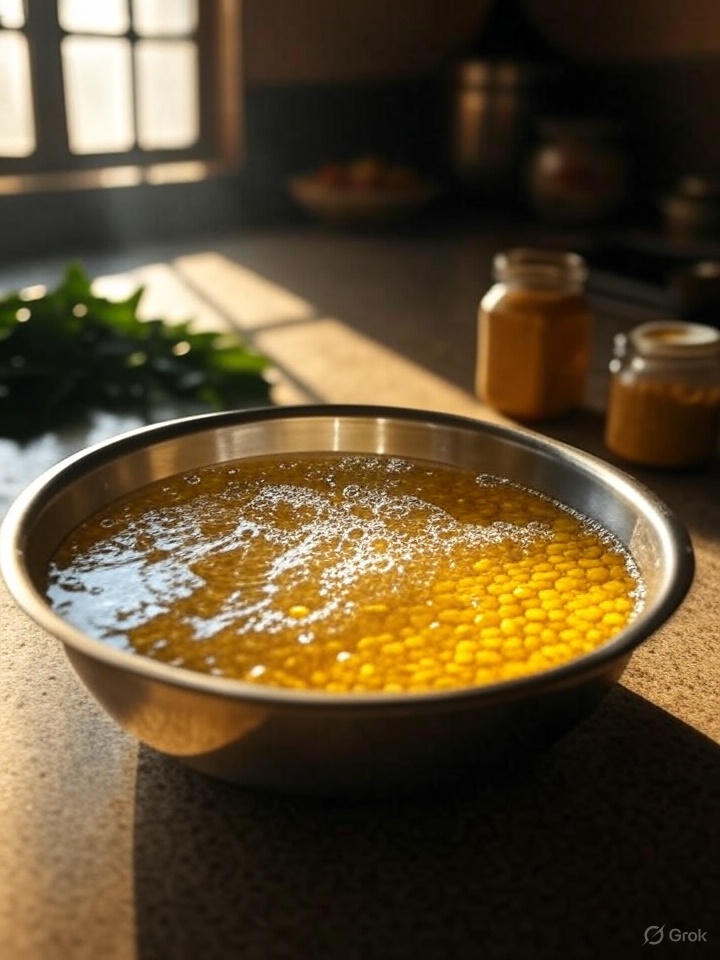
Soaking lentils isn’t just grandma’s advice—it’s the secret to better texture, flavor, and digestion in South Indian cooking. Discover why this simple step matters.
The Little Secret Sitting in Your Kitchen Bowl
You know that humble bowl of water with lentils quietly sitting on your counter? Yeah, the one your mom (or auntie) insists you never skip? Well, turns out, soaking lentils isn’t just one of those “old wives’ tales” from South Indian kitchens—it’s an actual game-changer.
When I was younger, I’ll admit, I used to roll my eyes at this. I’d be in a rush, skip the soak, and end up with sambar that tasted…well, let’s just say it had the charm of cardboard. Lesson learned: sometimes those simple, “boring” prep steps are where the real magic hides.
Why Soaking Lentils Actually Matters
1. Faster Cooking = Less Kitchen Drama
Nobody has the patience to stand by a pressure cooker that takes ages to whistle. Soaked lentils soften quicker, cutting cooking time in half. It’s like giving your dal a spa day before the real action.
2. That Creamy, Dreamy Texture
South Indian dishes—from sambar to rasam—are all about that perfect balance of silky and hearty. Soaking helps the lentils break down evenly, so instead of grainy mush, you get velvety goodness.
3. The Digestion Win (Your Stomach Will Thank You)
Here’s the not-so-glamorous truth: unsoaked lentils can make you feel bloated. Soaking activates enzymes that reduce those pesky compounds responsible for gas. Basically, your gut gets a smoother ride.
4. Flavors That Hug Each Grain
Ever notice how some sambar tastes flat while others make you want to lick the bowl? (No judgment if you’ve done it—I have.) That’s because soaked lentils absorb spices better while cooking, locking in flavors more deeply.
Anecdote Time: My Dosa Disaster
Picture this: I once skipped soaking lentils while grinding batter for dosa. The result? Pancakes masquerading as dosas—thick, rubbery, and nowhere near crispy. My family politely chewed in silence, but the side-eyes said it all. Moral of the story: shortcuts don’t always work in South Indian kitchens.
Common Mistakes When Soaking Lentils (And How to Dodge Them)
- Too Short a Soak – 10 minutes won’t cut it. You need at least 30 minutes (and for dosa batter, overnight soaking is the holy grail).
- Using Warm Water – Sounds logical, right? Nope. Warm water can make lentils slimy. Stick to room temperature.
- Forgetting the Rinse – That cloudy water? It’s got compounds you don’t want in your dish. Always rinse before and after soaking.
Not all, but most South Indian staples (like toor dal, urad dal, and moong dal) benefit massively. Split red lentils (masoor dal)? They’re quickies—you can get away without it sometimes.
For dosa idli batter you have to soak overnight the rice and urad dal. While for sambar, it is best to soak the dal half hour prior to cooking. In case you forget to soak, you can cook the dal in pressure cooker.
Soaking actually helps your body absorb minerals like iron and zinc better.
Wrapping It Up (And What To Pair It With)
Soaking lentils is like charging your phone overnight—it sets you up for a smooth day ahead. It’s the unsung hero of South Indian kitchens, and once you get into the habit, you’ll never go back.
Pro tip? Next time you soak, throw in some fenugreek seeds if you’re prepping dosa batter. It’s a little grandma-approved upgrade for fluffier, crispier results.
✨ Your turn: Do you swear by soaking, or are you still a shortcut taker? Drop your story in the comments—I’d love to hear your lentil confessions.